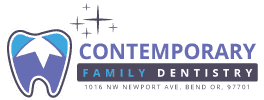Your toothbrush is one of the most essential tools in your oral care routine. While it may seem like a small item, its impact on dental hygiene is enormous. However, many people continue using their toothbrushes long past their effectiveness. Recognizing the signs it’s time to replace toothbrush is critical for maintaining your dental health and preventing long-term issues.
Why Replacing Your Toothbrush Matters
A worn-out toothbrush simply doesn’t clean your teeth effectively. Over time, bristles become frayed and bacteria can accumulate on the handle and head. According to the Centers for Disease Control and Prevention (CDC), toothbrushes should be replaced every three to four months, or sooner if the bristles become visibly worn.
Sticking to this routine helps maintain effective plaque removal, ensures better gum protection, and limits the chances of reintroducing bacteria into your mouth.
Key Signs It’s Time to Replace Toothbrush
Although there are general recommendations on how often to switch, certain physical signs and symptoms indicate your toothbrush is due for a change. Here’s what to watch for:
1. Frayed or Flattened Bristles
The most obvious and visible sign that it’s time to replace toothbrush is the condition of the bristles. When they lose their shape, they can’t effectively reach into crevices and clean between teeth. This not only diminishes cleaning power but may also irritate the gums.
2. Unpleasant Odor After Use
If your toothbrush smells bad even after rinsing it, bacteria could be thriving on the bristles or handle. Bad odor is a red flag, and continuing to use that toothbrush can put your oral health at risk. Proper rinsing and storing practices help prevent this, but once odor is present, it’s best to dispose of it.
3. Recent Illness or Infection
If you’ve had a cold, the flu, or any other viral infection, you should consider replacing your toothbrush immediately after recovery. The American Dental Association (ADA) suggests changing toothbrushes following illness to reduce the chance of reinfection.
4. Visible Discoloration
Toothbrush bristles that appear discolored may be stained from food particles or toothpaste. However, discoloration can also indicate the presence of mildew or mold—both harmful to your health. This is another strong indication that it’s time to replace toothbrush.
5. Toothbrush Feels Different During Use
If your toothbrush starts to feel rough on your gums or isn’t gliding smoothly across your teeth, the wear may have compromised its effectiveness. A noticeable change in how the toothbrush feels while brushing can mean it’s time for an upgrade.
Risks of Not Replacing Your Toothbrush
Using an old toothbrush does more harm than good. Here are some of the potential consequences of ignoring the signs:
- Bacterial Growth: Old toothbrushes can harbor bacteria like E. coli and staphylococcus, increasing your risk of oral infections.
- Ineffective Plaque Removal: Frayed bristles lose their scrubbing power, leading to increased plaque and tartar buildup.
- Gum Irritation: Worn bristles may scrape your gums and cause inflammation, leading to gingivitis.
- Worsening Bad Breath: Ineffective cleaning can leave food debris behind, contributing to persistent bad breath.
In a study published in the Journal of Periodontology, researchers found that toothbrushes with frayed bristles were 40% less effective at removing plaque compared to newer brushes. That’s a significant drop in performance, especially when brushing is your first line of defense against dental issues.
How Often Should You Replace It?
As a general rule, every three to four months is an appropriate interval. But depending on use and brush quality, you may need to replace it sooner. Children’s toothbrushes, for instance, tend to wear out more quickly due to more aggressive brushing habits.
Electric toothbrush heads should also follow the same replacement schedule. Many electric models come with indicator bristles that fade over time to remind users when it’s time to replace toothbrush.
Tips for Extending the Life of Your Toothbrush
Although toothbrushes need to be replaced regularly, proper care can help maintain their effectiveness during use.
- Rinse Thoroughly After Each Use: This removes toothpaste, debris, and bacteria.
- Store Upright and Air-Dry: Don’t store it in a closed container; this encourages bacterial growth.
- Keep It Separate: If stored in a shared holder, ensure toothbrushes don’t touch to avoid cross-contamination.
If you’re unsure how to care for your brush or when to replace it, Contemporary Family Dentistry can provide professional guidance during your routine checkups.
Choosing the Right Toothbrush
The type of toothbrush you use can influence how quickly it wears out. When selecting a new one:
- Choose soft bristles to prevent gum damage.
- Opt for a toothbrush head size that fits comfortably in your mouth.
- Consider electric models for more consistent brushing, especially for those with mobility issues.
According to a report by Colgate, electric toothbrush users are more likely to replace their heads on time due to reminder features built into the devices.
Encouraging Healthy Habits
To make sure your family adopts good oral hygiene, talk about the importance of toothbrush replacement. Add reminders to your calendar, or better yet, align the replacement schedule with seasonal changes—this makes it easier to remember.
Dental professionals emphasize that small changes, like timely toothbrush replacement, contribute significantly to long-term oral health.
Final Thoughts
Neglecting your toothbrush’s condition may seem minor, but it has a big impact on your oral health. When bristles are worn, bacteria are present, or the brush feels ineffective, it’s clearly time to replace toothbrush. Recognizing these signs early allows you to stay ahead of potential dental problems, ensuring your smile stays bright and healthy.
At Contemporary Family Dentistry, we’re here to support your dental care routine from start to finish. Whether it’s choosing the right products or setting up regular cleanings, our experienced team is committed to helping you achieve optimal oral health. Visit Contemporary Family Dentistry to schedule your appointment today and take the next step toward a cleaner, healthier smile.



